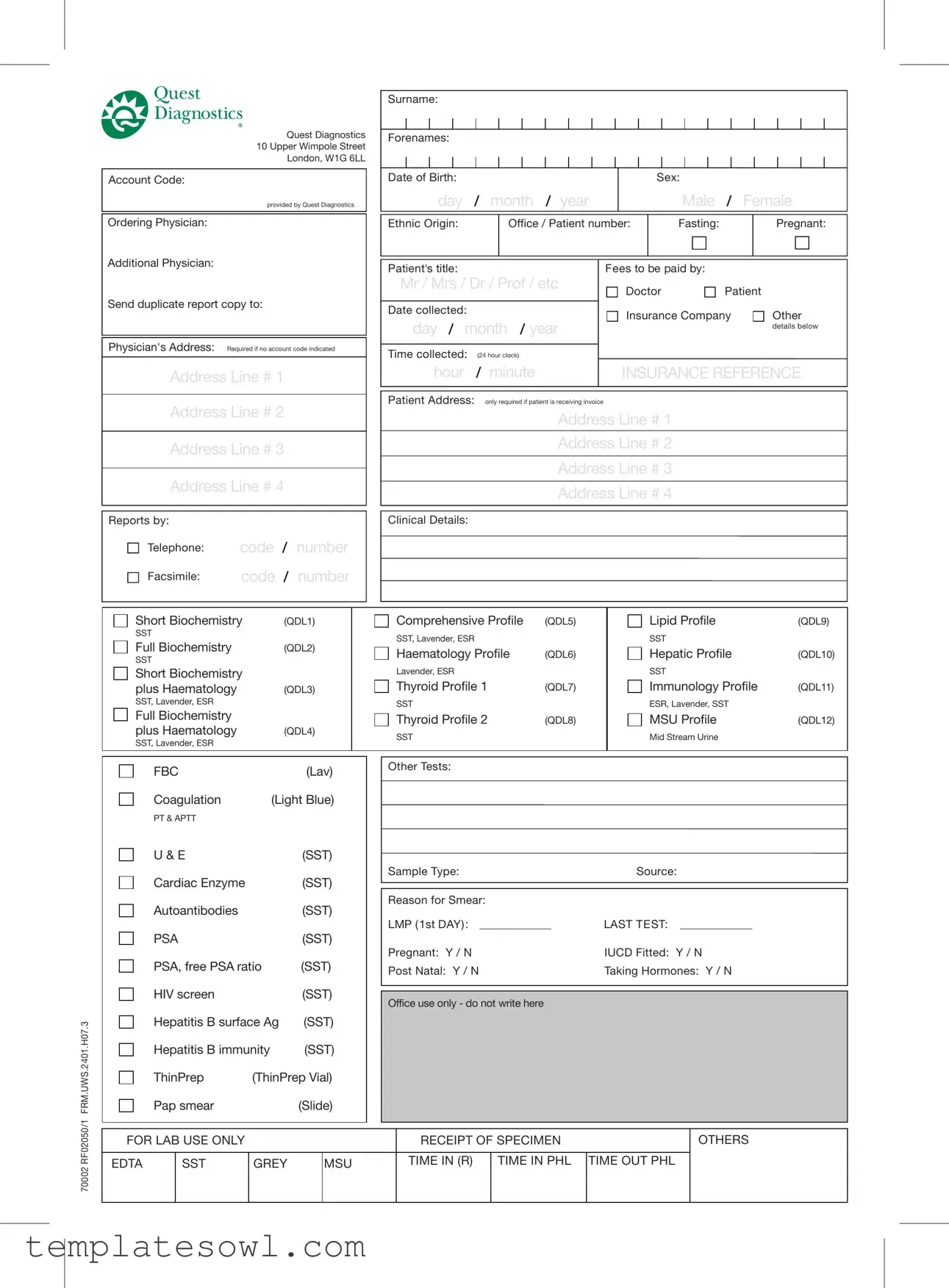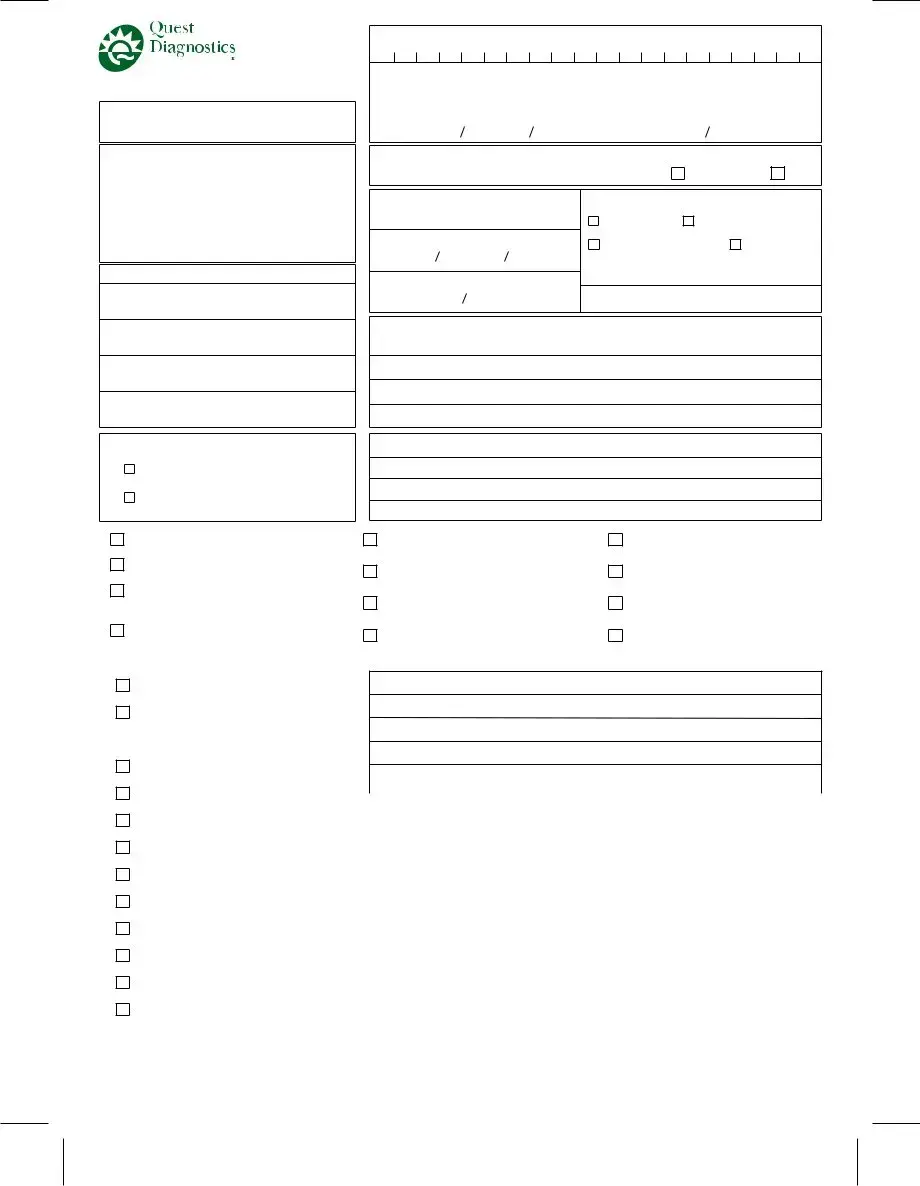What information is required to complete the Order Quest Diagnostics form?
The Order Quest Diagnostics form requests essential details for processing diagnostics. Required fields include the patient's surname, date of birth, sex, and ethnic origin. Additionally, the ordering physician's name, account code, and their contact information should be entered. It is also important to specify if the patient is pregnant, fasting, or using any medications. Collecting all this information accurately ensures the lab can perform the necessary tests and communicate results effectively.
How should I select the type of test to be ordered?
The form features a variety of tests to choose from, including profiles such as the Short Biochemistry, Comprehensive Profile, and specific tests like the HIV screen. A brief description of each test is listed alongside its code, which helps in making the right selection. If uncertain about which tests to order, it is advisable to consult the ordering physician for guidance. They are best equipped to recommend the necessary tests based on the patient's health needs.
What should be done if the patient’s insurance information is not available?
If the patient's insurance details are not available, it is crucial to indicate the payment responsibility on the form. Options usually include the doctor, the patient, or an insurance company. If no account code is indicated, the physician’s address becomes mandatory for billing purposes. Ensuring this section is completed accurately helps avoid any delays in processing the order and obtaining results.
Is there a way to receive a duplicate report of the test results?
Yes, the form allows for a duplicate report to be sent to a specified address. To request this, simply fill in the “Send duplicate report copy to” section with the relevant physician's address, ensuring to include all necessary address lines. This option is particularly useful for patients who would like their primary physician and the ordering physician to have access to the test results simultaneously.


 number
number number
number